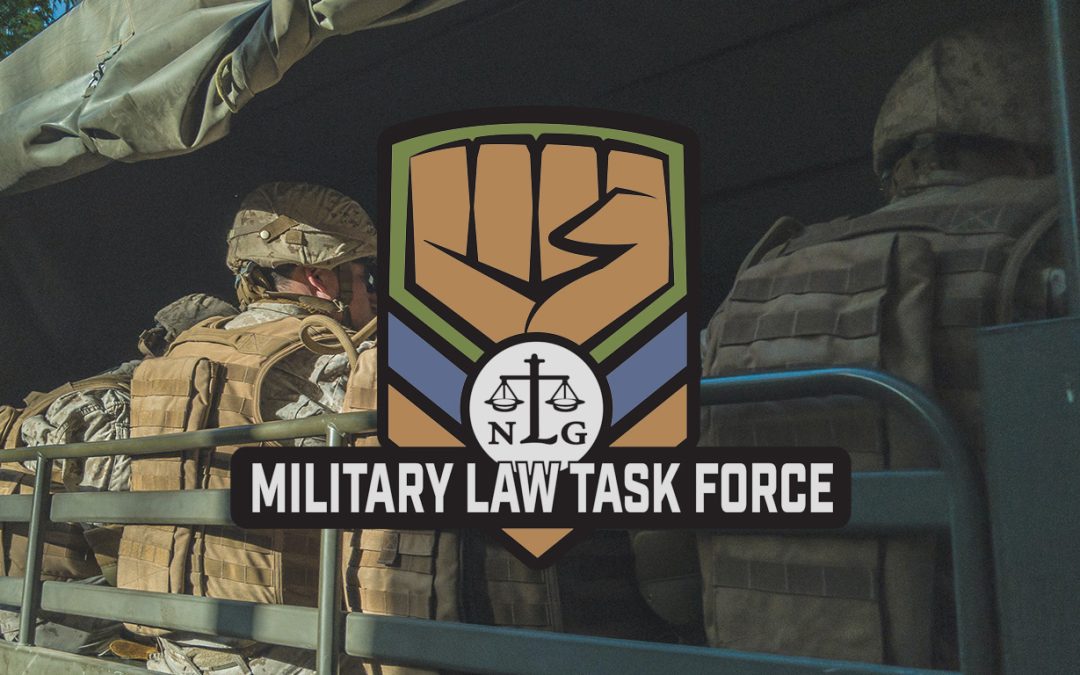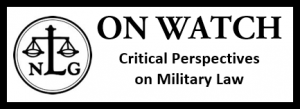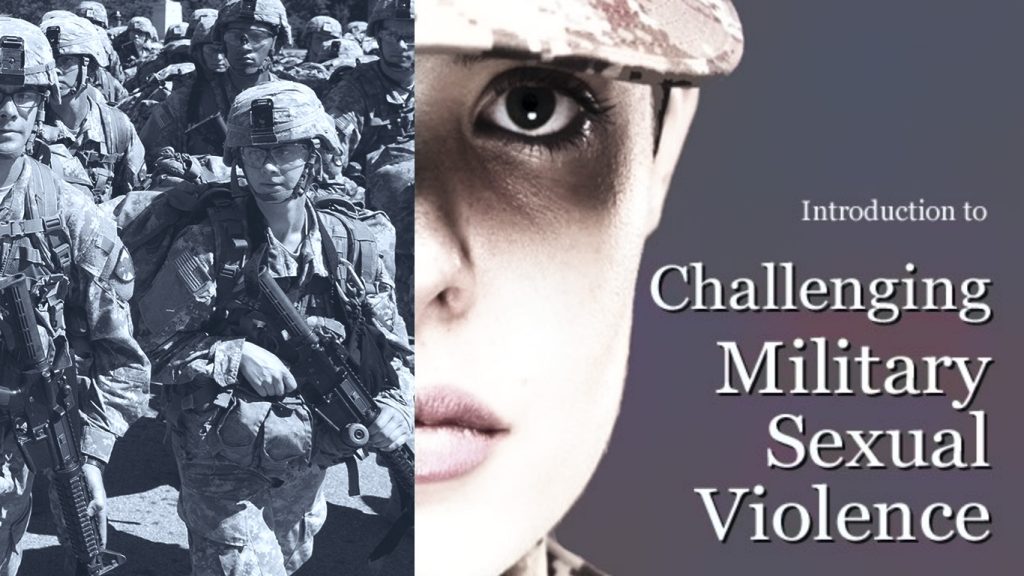BY BILL GALVIN
For the first time in 13 years, the Army issued new conscientious objector (CO) regulations (AR 60043) on May 16, 2019. While the CO administrative process remains basically the same, the revised wording is in many ways clearer than the previous version of the regulation. Minor changes in procedures reflect electronic transfer of documents in the digital age. At several points throughout the regulation, “During conscription” has been added to sections relating to the Selective Service System. There also are some significant changes.
The regulation now begins with an expanded section delineating responsibilities. The Assistant
Secretary of the Army (Manpower and Reserve Affairs) is named as responsible for developing “policies and criteria to classify and process” conscientious objector (CO) applicants, and the Deputy Assistant Secretary of the Army (Review Boards) is named as presiding over the CO Review Board. The President of the CO Review Board is directed to “ensure the board members review applications without bias or prejudice.” The Deputy Chief of Staff has the responsibility to “develop policies which define the use and assignment of noncombatant conscientious objectors (1-A-O) when such Soldiers serve in the Army.”
While internal memos obtained by CCW and MLTF cooperating attorneys in 2013 explained this, the regulation now reflects the role of the Deputy Assistant Secretary of the Army as the final authority on all 1-O applications for discharge and 1-A-O noncombat applications that were not approved at the command level. While applications continue to be forwarded through normal command channels, paragraph 2-8 of the new regulation provides new addresses for reserve commands. The previous regulation repeatedly referred to Headquarters (HQDA) or the Department of the Army CO Review Board (DACORB). The new regulation routinely uses ARBA – the Army Review Boards Agency, which includes DACORB.
The updated regulation contains additional information about determining sincerity of the applicant. In paragraph 1-6, Policy, it states that the Investigating Officer (IO) should explore the applicant’s general demeanor, conduct and behavior, and the “rigor of their studies” before and after crystallization. “The application should contain enough evidence to validate the asserted beliefs of the applicant, including any change or crystallization in beliefs. Failure to adequately demonstrate or substantiate that their asserted beliefs govern the applicant’s actions in word and deed will result in denial of the application” (Para. 1-6.a(7)(a)).
The Policy section also contains a more extensive discussion of religious training and belief, explaining that ethical and moral beliefs qualify, “even though the applicant may not characterize these beliefs as ‘religious’ in the traditional sense, or may expressly characterize them as not religious” (para 1-6.b). These words are not new to the regulation. In the previous version, they were in the definition of “Religious training and belief.” The list of definitions was at the very end of the regulation, after the appendices. It is good that this explanation was moved to a place of prominence in the regulation.
While COs previously were required to reimburse the government for unearned money and educational costs they received, the regulation now requires notification of this as part of the early processing, similar to the counseling about potential loss of veteran’s benefits, and creates a new form letter, “Statement of Understanding, Recoupment of Unearned Benefits” (Fig. 2-4).
The regulation now allows warrant officers (WO—3 or above) to be appointed as Investigating Officers. Previously only commissioned officers (O-3 and above) could be assigned as IOs.
Concerning the written summary of IO hearings that must be prepared by the IO, the previous version of the regulations stipulated, “The investigating officer’s version is final as to the record of the testimony of the witnesses.” That is deleted from the new version.
Paragraph 2-6.d says, “The SJA will make a recommendation for disposition of the case.“ The 2006 version of the regulation included this additional detail: “…supported by reasons. The use of only the term ‘legally sufficient’ does not fulfill this requirement. Comments by judge advocates below the GCMCA level are gratuitous but, if made, will be addressed by higher headquarters when a conflicting recommendation is made.” It is unclear why this was deleted from the new regulation or what impact it will ultimately have.
The new regulation adds some details about the assignments of 1-A-O conscientious objectors. For enlisted COs, “Defensive training, such as unarmed defense, passage through minefields, search of casualties for booby traps, and disarming of booby traps found on causalities may be offered to 1–A– O noncombatant Soldiers. Service aboard an armed ship or aircraft or in a combat zone will not be considered to be combatant duty unless the individual concerned is personally and directly involved in the operation of weapons. Excluding noncombatant duties and training, conscientious objectors are not allowed to avoid hazardous duties that may be part of the mission of the unit to which assigned. They are subject to Army regulations and directives, including those on training and discipline. They are available for worldwide assignments” (para. 3-1.b(1)(a)). Most of this detail was not in the previous version of the regulation. However, that version referred to a different reg (AR 614-200) that had similar wording. But according to AR 614-200 the minefield/booby trap training would only be offered “if a conscientious objector so requests.”
The guidance continues for officers: “Officers designated as conscientious objectors, noncombatant 1–A–O, will be managed and assigned on a case by case basis. Generally, those in combat arms branches will be involuntarily branch transferred to a noncombat arms branch. This policy should not be construed to require automatic reclassification into an U.S. Army Medical Department specialty” (para. 3-1.b(1)(b)).
The new regulation also adds the following paragraphs in reference to 1-A-O conscientious objectors:
(c) Deployment and/or assignment to hostile fire areas. Deployment or assignment to hostile fire areas must be shared equally by all Soldiers, except that noncombatant 1–A–O Soldiers will not be required to bear arms or be trained in the bearing of arms.
(d)Leadership positions and assignments. The needs of the Army drive all assignments.
Noncombatant Soldiers (1–A–O) should not expect the full range of assignment options. Since unit and individual readiness is paramount, Soldiers of leadership rank should not be placed in positions where their noncombatant status may detract from their ability to train and lead Soldiers.
During times of conscription, when someone has served less than 180 days, the General Court Martial Convening Authority is required to notify Selective Service of their discharge (par. 3-2), presumably so they could be ordered to perform alternative service. While those so discharged were always subject to potentially being drafted into alternative service, the requirement for the GCMCA to notify Selective Service of their discharge is new.
Considering the bias that is often directed toward COs, it is significant that the new regulation has added these words: “In and of itself, an application for conscientious objector status does not constitute misconduct, and the act of applying for conscientious objector status will not be used as a basis for a general (under honorable conditions) discharge” (par. 3-4.a). We have indeed seen in the past COs threatened with less than fully honorable characterizations, so this addition is a good reminder to commands and COs that even soldiers are entitled to exercise freedom of conscience.
The questions one must answer to apply for CO status are essentially the same, except applicants are now required to provide their DOD ID number instead of their Social Security number. Although the latest update of the Department of Defense Instruction (DODI 1300.06) made in 2017 now only lists three essay questions related to ‘training and belief’ in the written application, the army (and all other branches as of this time) still requires the full six essay questions in the written application. A couple of the questions have been slightly reworded, and the order has been changed to be consistent with other branches of the military. The changes are minor, arguably make some questions more clear, and reflect a more inclusive attitude on the part of the army (for example, “church” has been replaced with “religious organization” in several places.)
There are some changes in the Informal Guide for the Investigating Officer, Appendix C in the new regulation. Most significantly, this instruction to the IO has been deleted: “Question the sincerity of the applicant if an applicant has delayed for a significant period of time after the crystallization of his or her beliefs to submit an application.” The previous version of the Guide also included language instructing that the IO “must attempt” to discern whether someone had a sudden crystallization, or whether their beliefs evolved gradually, and if so, when, where and under what circumstances. This has also been deleted.
The Guide now includes the following: “b. In attempting to determine whether a conscientious objection to participation in war or combat is founded upon religious training and belief, as defined above, the proper scope of inquiry is whether the applicant holds the asserted beliefs and whether they are the product of a conscious thought process resulting in such a conviction as to allow the person no choice but to act in accordance with them. Beliefs can be deeply held even though they lack sophistication. Care must be taken to avoid the inference that an applicant who lacks sufficient insight or knowledge to express their beliefs clearly does not hold the beliefs, or that they are not “religious” in origin or held with the strength of traditional religious convictions.” Like the new wording in the Policy section, these words were previously in the definition of “Religious training and belief.”(They were actually in parentheses at the end of the definition.) Hopefully by moving this language to the Guide for the IO, it will have more prominence and hopefully greater influence.
In the previous regulation, Appendix C was a “Suggested Checklist for Processing CO Applications.” That has been replaced with an “Internal Control Evaluation,” now Appendix D, which is virtually identical to the previous “Checklist.”
A number of typos that persisted through several revisions of the regulation over the years have been corrected in this update. Yet, for some inexplicable reason, a couple of new typos now appear in the Statement of Understanding (figure 2-6) that were not in that Statement in the previous regulation (figure 2-5).
Overall the new regulation is similar to the previous version, and as was noted at the beginning, the processing for COs is essentially the same. It does seem that this version offers a slight improvement.



